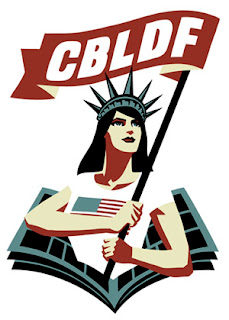I've touched on the subject of digital comics before noting how much I enjoyed reading them from my iPad. (
comics on the iPad) I still enjoy reading comics this way, but this time I'm sharing my low-budget opinion on print versus digital costs when it comes to comic books.
Those of us who are older may recall that comic books once sold for well under a dollar. 25, 50 or even 75 cents an issue held strong for years. Today comics cost anywhere from 2.99 to 3.99 for a
single issue, with most really falling under the 3.99 price tag. This is happening for a variety of reasons: paper and color costs are up, better pay is going to talented writers and artists, and the need to feed the shareholder demand for profits is never ending.
Caught in the crossfire are those of us who actually want to read the comics, and many others who want to own physical copies of these items. But the writing is on the wall for tangible editions which are likely to disappear because digital dissemination of comic books is faster, cheaper, and leading to even greater control for the companies that issue them. One would think that the price for digital content, which has no future value at all, would be reasonable. Right now, "reasonable" only applies what you buy and when you buy it.
Like Apple with its music and Amazon with its books, comics cost more the more recently they've been released. A digital copy of the
Avengers, for example, runs the exact same price as the physical copy when issued, 3.99. That's too steep for a product that has no long term value. With time, the pricing does seem to drop to 2.99, 1.99, and in some cases .99. But, there's no guarantee that title prices will drop and it can mean waiting a few years for prices to reach the .99 marker. Each Monday, Marvel comics advertises it's 99 cents sale through Comixology. (See image on the right.) This Monday, there were 50 Spider-Man comics for sale at .99 cents each. But these issues date back to 2008. To my thinking, this pricing model wrongs its customers and is going to harm the companies continuing to use it.
Companies like Marvel and DC, the two biggest comic book publishers, should pass on some of the colossal savings they're getting by selling on a digital platform to their customers. Digital sales means less spent on paper and ink, less on distribution to stores and comic specialty shops, and less on guessing how many copies to print in anticipation of demand. These are significant costs for these companies, and POOF! they're gone when your product becomes digital. Still, these companies insist on receiving the same price as the physical edition. That's a mistake. Yes, I get that there are other elements to think of such as the losses coming from the dark practices of those who pirate, losses that occur in trying to maintain a physical presence when moving to a digital one, and the fact that no one is obliged to buy the content to begin with. But, if these companies want to build a following -critical to their financial survival- they'll stop stepping into the realm of gouging. Even now, those who place advance orders of physical comic books receive steep discounts from on-line sites. These range from 25-40% off the listed cover price. And yet, Marvel and DC won't offer the same with digital content. Well, unless you're willing to wait years for prices to drop. Again, that's a mistake and hurts those on both ends of the transaction. They believe they can afford to gouge now because they're profiting handsomely, but that's short term thinking.
The trend to offer digital content cheaply, but in volume, is what's going to bring most comic publishers to a fairer price point. Digital copies should range from 1.99 to .99, with the majority coming in at .99. What Marvel and DC might soon discover is that people will likely try
more comic book titles and end up coming back each month to spend the same amount if they figure each one it less than a buck. Right now anyone new to comics is likely looking at 3.99 for
one comic book -something that can be read in 10-20 minutes- and thinking, I'll spend my money on something else.
I do believe that eventually comic companies will get this right. Prices will race to the bottom as more independents enter the fray and offer extremely reasonable prices. One talented duo, Zander Cannon and Kevin Cannon of
Double Barrel just released 122 digital pages of their comic for 1.99 through Top Shelf -a very fair price and a heck of a smart move. I bought a copy, and I am pleased I did.
For now, the digital comic book world is out of whack. It will, I hope, get it's collective act together and bring to readers of all ages its fine products at a reasonable (and still profitable) price.
There are a long list of comic book apps to choose from. Some are quite specific, Marvel and DC have their own, but the one I find most seamless and offers the largest variety is Comixology.










